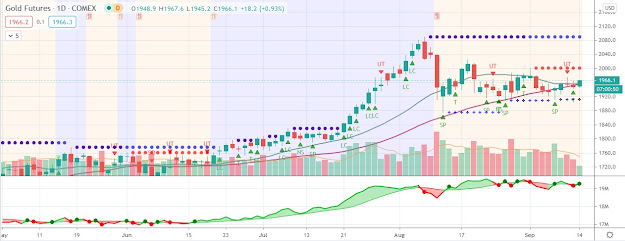The price of gold advanced near $1,800 per ounce as confidence in Italy’s ability to bring its fiscal deficit under control is evaporating
 The gold price climbed Wednesday morning as Italian bond yields spiked through 7.5%. The price of gold advanced near $1,800 per ounce as confidence in Italy’s ability to bring its fiscal deficit under control is evaporating. Yesterday’s news that Italian Prime Minister Silvio Berlusconi agreed to resign following the approval of an austerity plan temporarily stabilized financial markets, but investors resumed selling Europe’s sovereign debt on worries that the crisis was set to infect the rest of Europe at a more rapid pace. S&P 500 stock futures tumbled 27.30 to 1245.90.
The gold price climbed Wednesday morning as Italian bond yields spiked through 7.5%. The price of gold advanced near $1,800 per ounce as confidence in Italy’s ability to bring its fiscal deficit under control is evaporating. Yesterday’s news that Italian Prime Minister Silvio Berlusconi agreed to resign following the approval of an austerity plan temporarily stabilized financial markets, but investors resumed selling Europe’s sovereign debt on worries that the crisis was set to infect the rest of Europe at a more rapid pace. S&P 500 stock futures tumbled 27.30 to 1245.90.The escalating potential for deflation was evident last week as the European Central Bank (ECB) and Federal Reserve conducted their respective monetary policy meetings. The ECB unexpectedly cut its benchmark interest rate, with new President Mario Draghi noting that “particularly high uncertainty and intensified downside risks” were key factors behind the decision. As for the Fed, the tone of its policy statement was notably more dovish than from prior meetings, with President Evans casting a dissenting vote in favor of further accommodation. The Fed’s stance led to increased speculation that a third round of quantitative easing (QE3) could be likely in the months ahead.
Commenting on the outlook for the gold price, Bart Melek – TD Securities’ Head of Commodity Strategy – wrote in a report published this week that “Promises of very easy monetary policy from the Fed that could see some additional ‘money printing’ and ECB interest rate cuts have made gold investors quite happy…We expect more upside longer term, with the inevitable headline related choppiness as part of the gold landscape.”
The gold price “has rallied and will continue to move higher into 2012 because the very low and declining short and long term yields will reduce the real opportunity cost of holding gold,” Melek added. “All this easy money, high national debts and systemic risk should also firm up demand for the metal as a hedge.”
Melek went on to say that “There is also concern that the ECB may eventually need to ‘print’ money in order to backstop the European debt mess. We are not saying that this is our base case, but merely that it is a risk that the gold market has responded to.”



Comments
Post a Comment